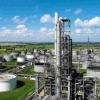Hi,
I am confused between the pressure drop of the system (Driving force) and the pressure drop across a Valve.
-Is the pressure drop across a Valve added to the initial pressure drop of the entire system (source and destination) or is it shared. For example before adding a valve, the pressure at the inlet is 10 psi and at the outlet its 5 psi. When a Valve is added, does it create an extra pressure drop or what does it do?
- Pressure drop due to the Valve, is it more of a pressure loss due to friction and hence the flow rate is decreased? or is it the same as the pressure drop between the source and destination where it is the driving force for the flow? or a mix of both?
Not sure if I quiet got my message through.
Sincerely,
O.Yakobi

 FB
FB













